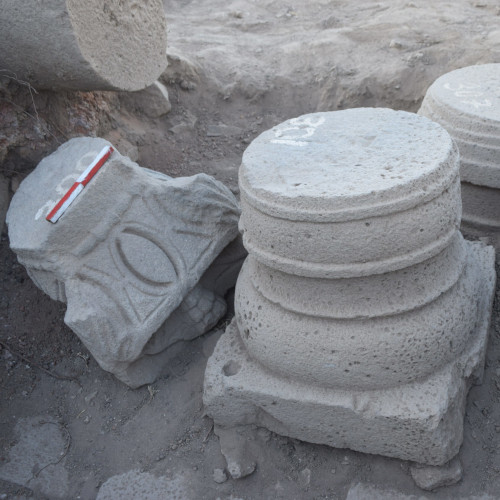Byzantine synagogue uncovered in Golan
Archaeologists find lost synagogues beneath abandoned villages
Nathan Steinmeier
October 20, 2025
0 comments
538 thoughts

Architectural Fragments from a Byzantine Synagogue. Courtesy of Michel Osband
Archaeologists have long suspected that an ancient synagogue lies beneath the ruins of an abandoned village in the Western Golan. Now, they finally got it. Excavating in the Judea Nature Reserve, archaeologists from the University of Haifa and Konret Academic College uncovered the remains of a basilica-style synagogue dating from the Byzantine period (AD 324–634), when the Golan was a primarily Jewish region.

free ebook, Who was Jesus? Exploring the history of Jesus’ life. Review basic questions about Jesus of Nazareth.
Unveiling a synagogue
A previous survey in the Judea Nature Reserve noted a large amount of Byzantine architectural elements in secondary use in the reserve’s abandoned Syrian village remains. Some of the reused pieces were decorated with menorahs, a strong indication of the presence of an ancient synagogue. However, none of the previous surveys were able to locate the synagogue itself.

Aerial view of the Byzantine Synagogue in Judea Nature Reserve. Courtesy of Michel Osband.
While carrying out the renewed survey work, the current archaeological team noticed that three column drums were placed on the village road. “We decided to investigate there because it was one of the areas where the remains were not in secondary use,” said Michel Osband of the University of Haifa, co-director of the excavation. “Already at the beginning of the excavation, dozens of architectural fragments were exposed, and later, to our surprise, the southern wall of the structure was revealed, with three openings facing Jerusalem.”

Column drums on the way before excavation. Courtesy of Michel Osband.
Excavations revealed two courses of ashlar stones, belonging to the southern wall, as well as the remains of the western and eastern walls. The ancient synagogue would have measured about 42 by 42 feet wide and 55 feet long, indicating that it was probably built in the basilica style, which was characteristic of synagogues in the region at the time. These were rectangular buildings with two rows of columns and benches along the walls. According to Osband, the walls, together, resemble architectural stones found in other synagogues. In total, the team identified more than 150 architectural fragments, including lintels, column drums, and decorated basalt stones, most of which were reused in the abandoned village.
In related reading Bible History Daily
Step into the Aleppo Synagogue
Ancient synagogues in Israel and the Diaspora
All Access Members, read more at BAS Library
First Person: The Sun God in the Synagogue
Scholar’s Update: New mosaics from Haqq Synagogue
Samson in the Synagogue
No a BAS Not yet a library or All Access member? Join today.









